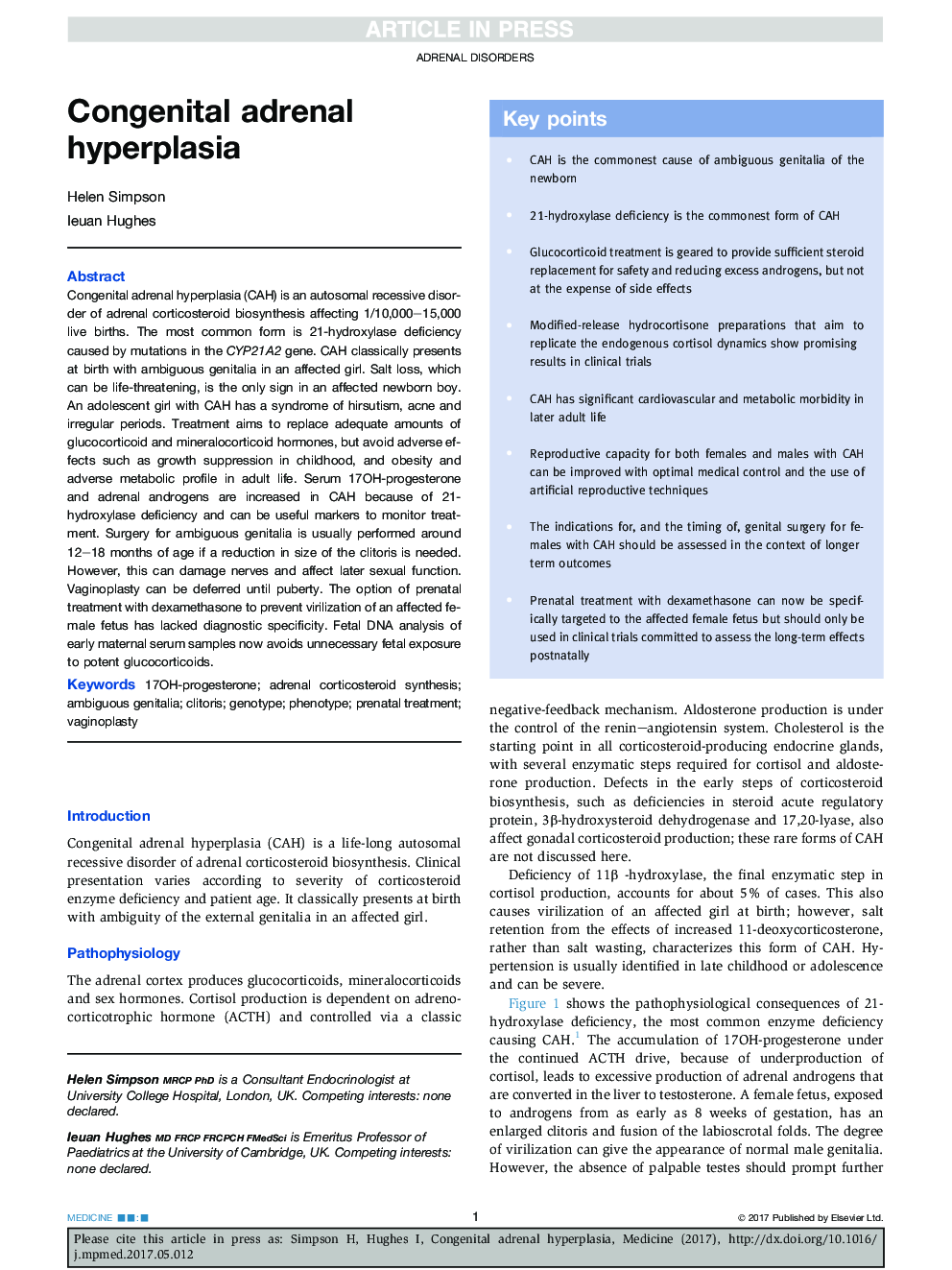| Article ID | Journal | Published Year | Pages | File Type |
|---|---|---|---|---|
| 5681130 | Medicine | 2017 | 4 Pages |
Abstract
Congenital adrenal hyperplasia (CAH) is an autosomal recessive disorder of adrenal corticosteroid biosynthesis affecting 1/10,000-15,000 live births. The most common form is 21-hydroxylase deficiency caused by mutations in the CYP21A2 gene. CAH classically presents at birth with ambiguous genitalia in an affected girl. Salt loss, which can be life-threatening, is the only sign in an affected newborn boy. An adolescent girl with CAH has a syndrome of hirsutism, acne and irregular periods. Treatment aims to replace adequate amounts of glucocorticoid and mineralocorticoid hormones, but avoid adverse effects such as growth suppression in childhood, and obesity and adverse metabolic profile in adult life. Serum 17OH-progesterone and adrenal androgens are increased in CAH because of 21-hydroxylase deficiency and can be useful markers to monitor treatment. Surgery for ambiguous genitalia is usually performed around 12-18 months of age if a reduction in size of the clitoris is needed. However, this can damage nerves and affect later sexual function. Vaginoplasty can be deferred until puberty. The option of prenatal treatment with dexamethasone to prevent virilization of an affected female fetus has lacked diagnostic specificity. Fetal DNA analysis of early maternal serum samples now avoids unnecessary fetal exposure to potent glucocorticoids.
Keywords
Related Topics
Health Sciences
Medicine and Dentistry
Medicine and Dentistry (General)
Authors
Helen Simpson, Ieuan Hughes,
